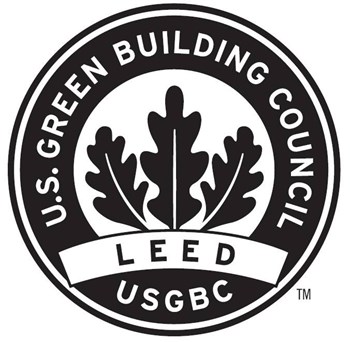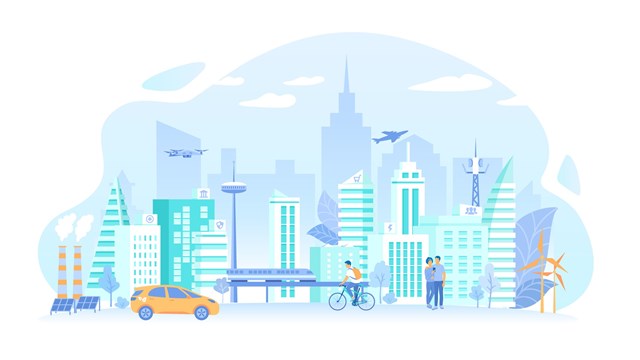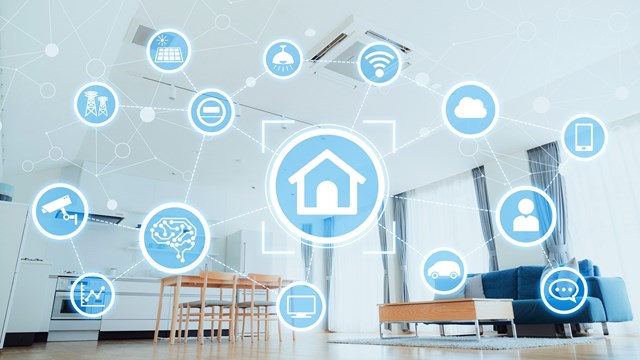
There are two ways—and only two ways—to balance a budget: increase revenue, or decrease spending. Whether you’re the treasurer of a co-op or condo board or the President of the United States, those are the only two levers at your disposal.
Energy is no different. With the global population soaring, with oil reserves plateauing just as new markets are emerging in China and India—and with the climate changing at an unsustainable rate—the need to both increase sources of energy and conserve the ones we have has never been more vital.
The Gold Standard
Since it was first implemented 20 years ago, the U.S. Green Building Council’s Leadership in Energy & Environmental Design certification has been the gold standard when it comes to measuring a building's environmental conscience. Being LEED- certified at any level means that much thought and planning was put into a building before the ground was even broken to begin construction. LEED buildings have an array of advantages over non-certified buildings—some of which are wallet-based, some of which are body- and health-based. Waldorf Towers Hotel in Miami Beach, Palmetto Bay Municipal Center, Village of Wellington Municipal Complex, Clifton Hotel in South Beach, The Largo Community Center and The United Federal Courthouse in Fort Pierce and a number of residential buildings—are LEED-certified in South Florida.
According to the USGBC, the residential market—from multi- to single-family, from market rate to affordable housing, is reaping the benefits of using green building techniques. Since the launch of LEED for Homes in 2008, more than 30,000 homes have received LEED for Homes certification and nearly 93,000 are registered for certification. Over half of all LEED-certified homes are in the affordable housing category, the USGBC says.
And cities and towns are getting on board, too. There are 44 certified and 58 registered Florida Green Building Coalition Local Government-designated cities and counties in the Sunshine State, according to Suzanne B. Cook, the FGBC executive director. And, as of the fall 2012, 201 homes in Florida are LEED-certified.
LEED-ing the Way
What is LEED? Why is it the golden standard? How can boards go about making their buildings LEED-certified? And would they want to?
In 1993, a troika of prescient industry experts—Rick Fedrizzi, David Gottfried and Mike Italiano—founded the U.S. Green Building Council, to promote sustainability in building and construction. They gathered representatives from a wide swath of architecture firms, and set to work on a system to rate buildings according to how “green” they were. Seven years later, the Leadership in Energy and Environmental Design building certification system was unveiled, consisting of a series of criteria to quantify how energy efficient buildings are.
“In the early days, LEED was a program that attracted architects and then engineers and then designers,” explains Rick Fedrizzi, CEO and president of the USGBC. “And you look at LEED today and the audience around the world that we are attracting, it’s astounding. We all come together with the common thread: sustainability. I think LEED does that better than any other organization out there. The idea that we can better understand our world, energy, water or waste materials innovation, and understanding all those things and yet applying them to our lives so that we become more productive in our daily life and in our daily business and to ultimately leave a better world behind.”
“It’s expanded since its inception,” says David Ahrens, president of the Association of Energy Engineers. “Right now, it consists of nine different ratings systems.” The nine systems represent nine different categories of buildings. The ones relevant to residential buildings are:
Core and Shell: “Not what’s inside,” Ahrens explains, but the exterior of a building and its central systems.
Existing Buildings: Operations & Maintenance (EBOM): A green HVAC system and state-of-the-art windows go a long way.
By the Numbers
Each category is broken down into a series of indices, and each index is rated. The score is then aggregated, and the result is a number from 1-100. 40 to 49 is LEED-certified; 50-59 is silver; 60-79 is gold; and above 80 is platinum, Ahrens explains.
In October 2010, Cascada at Monterra, a community of town homes in Cooper City in Broward County became LEED-certified. The sustainable community features homes with improved indoor air quality through the use of fresh air intake and an insulated sealed duct air conditioning distribution system, MERV 8 air filters, energy-saving CFL’s, carbon monoxide detectors, low volatile organic compound (VOC) carpeting, low VOC paints, exterior-vented microwaves and water-saving elongated water closets.
In addition, this past February, 600 Brickell at Brickell Worldwide Plaza in Miami became LEED platinum-certified in South Florida. The $300 million, 600,000-square-foot, 40-story Foram Group office building located in the city’s financial district was awarded the distinction in the core and shell category, specific to new construction.
“Planning, planning and planning is the most important part when it comes to making a building green,” says Tracy Story, Foram Group’s president of leasing and management. “Whether you have an older existing building or you plan a new one. Google the resources, starting with the U.S. Green Building Council www.usgbc.org. Then research the best LEED-certified green building consultant in your area. Check out the certification and track record, and let them make a recommendation. We worked with BVM Engineering (BVME) of Atlanta, a division of IES Consulting. They did a terrific job, but there are a growing number of excellent smaller companies and individuals who can help guide you through the process.”
In January 2011, the City of Largo Community Center also earned Platinum LEED Certification. The 30,000-square-foot facility features photo-voltaic solar panels—72kW, reclaimed, low flow water that saves 112,000 gallons per year and a community garden with rain chains, bioswales and a curving channel that create a tranquil and visual connection to the storm water system. In addition, the roof’s solar panels and its mechanical systems were designed with control systems that minimize operational costs and maximize efficiency. The facility also features a rainwater irrigation system as well as landscaping using drought-hearty plantings.
“The community is really responding to the building,” says Craig Nolan, manager of the Largo Community Center. “They absolutely love it. They tell us every day, everyone is amazed at how nice the building is. Everyone loves how recycled, local material was used for building. But one of the best things is that our energy costs are down by about 15 percent.”
LEED EBOM recognizes superior performance in five core categories: sustainable sites; water efficiency; energy and atmosphere; materials and resources; and indoor environmental quality. It also recognizes innovation in operation and designates certain priorities based on a building’s geographic location. This is important, because most residential buildings seeking LEED certification are existing buildings, and this will strive for LEED EBOM certification.
Getting Certified
Another organization, the third-party Green Building Certification Institute, provides the certifications. “It certifies individuals as LEED-accredited professionals,” says Ahrens. Certification involves learning about the LEED system, about conservation of building resources, about how to make existing buildings more green.
Not long ago, this sort of environmental movement was the provenance of dreamers and hippies. Now it is something that unites people from across the political divide.
“The idea that you could be green in a cost-effective way is very compelling,” says Ellen Honigstock, the USGBC’s director of construction education and an architect. Once the organization showed the way to achieve energy efficiency, the idea took off.
To green your building, Honigstock says, “Start to figure out what you already have, how you perform.” The initial steps involve analyzing the usage of energy and establishing benchmarks. “Benchmarking is when you calculate the amount of energy used,” she explains. Then, the professionals get involved. “Architects do an analysis—how to improve windows, lights, heating.” The architects and engineers, she says, will provide estimates on what the upgrades to existing buildings will cost. “There are government initiatives to offset the costs,” she says.
“It’s a fairly expensive process,” she concedes. The upfront price tag is one of the barriers to a wider acceptance. Boards look at the capital investment and get nervous. The idea that a building should spend money now to plan for the future is, in many cases, not the way boards tend to think. Budgets are hard enough to calculate without start-up costs.
The other hurdle is lack of knowledge. In most co-ops and condos, the property managers are the agents of change. They’re the ones who spot trends and advise buildings to try new things. But property managers tend not to be among the many professionals, who hold LEED accreditation.
“You know what building managers do. They’re busy. They don’t have time,” Honigstock says. “Boards have to ask managers to do it,” to get the LEED training. “Request an agent to get trained and make the changes,” she advises.
Honigstock believes that getting LEED certification for a building is the single best thing anyone on a board can do for the environment. When asked point-blank if there were any benefits to not moving to a LEED-certified system, Honigstock says, pointedly, “None.”
The push for green buildings has happened at a stunning rate of speed. LEED was still in the larvae stages 20 years ago. The ratings systems have only been around for 13 years. The Green Building Certification Institute has only been awarding certifications for five years—a blink of the eye.
It’s not going to happen overnight and changing to a more eco-friendly state of mind takes time. But experts believe that the fact that so many buildings have gone green is a great boon for the environment.
Greg Olear is a freelance writer and a frequent contributor to The South Florida Cooperator. Staff writer Christy Smith-Sloman contributed to this article.






Leave a Comment